Buttery & Flaky Sourdough Biscuits
These Sourdough Biscuits are both fluffy and flaky. Sourdough discard creates biscuits with a light crumb and wonderful flavor. I’ll show you a simple technique which creates a super-flaky texture.
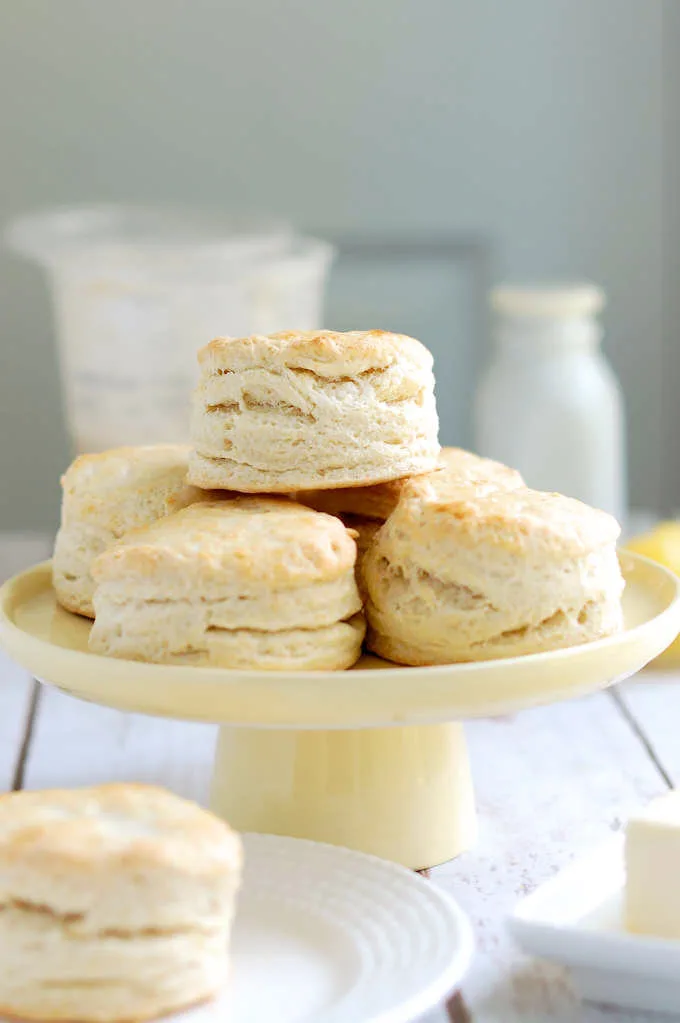
Table of contents
Why these are the best Sourdough Biscuits
- This recipe uses a whole cup of sourdough discard.
- Gentle folding develops layers of dough that bake into lovely, buttery layers in the final biscuit.
- This dough is so tender you don’t need a rolling pin. You can easily pat it into shape using your hands.
Ingredients
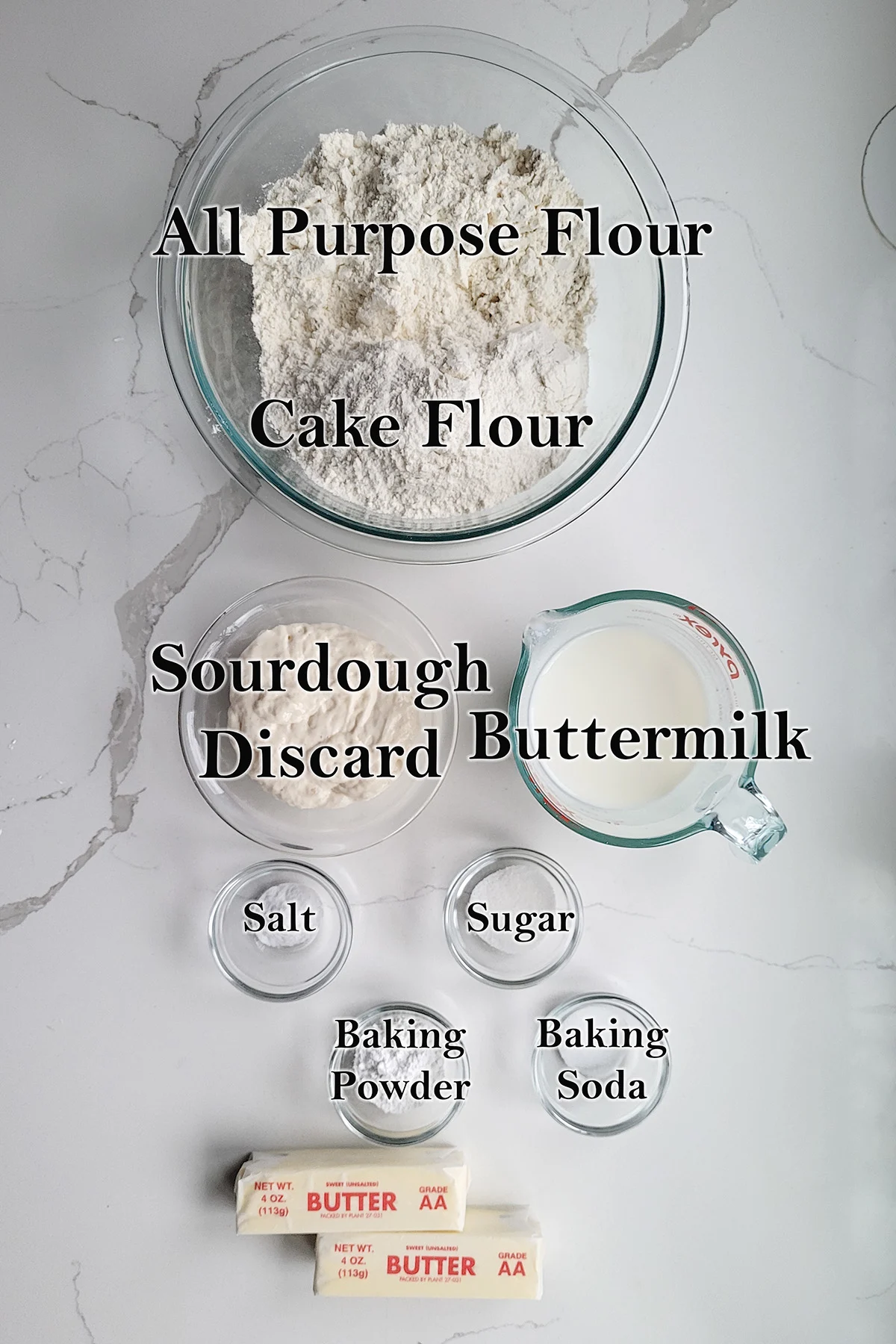
Ingredient Notes
- Flour – This recipe uses a mixture of 1/2 all purpose and 1/2 cake flour. All purpose flour gives the biscuit dough enough body to create layers, and cake flour has a lower protein content to keep toughening gluten at bay. Pastry flour can be used instead of the flour mixture.
- Sourdough Discard – This recipe was developed using a 100% hydration starter. That means the starter is fed with equal weights of starter, flour and water. You may need to adjust the amount of starter in the recipe based on the moisture level of your starter.
- Buttermilk – Acidic Buttermilk tenderizes the dough and has lightly tangy flavor that is perfect in this recipe.
How to make Sourdough Biscuits:

- Combine the dry ingredients.
- Work the butter until it’s slightly larger than pea-size.
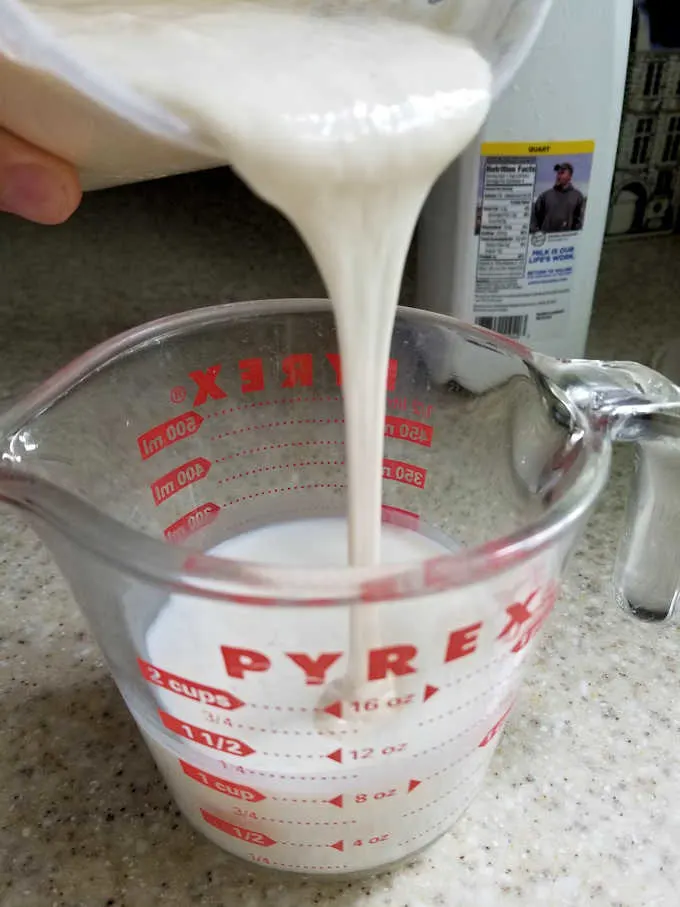
- Combine the buttermilk and the sourdough discard.

- Add the wet ingredients all at once and mix until almost combined.
- Briefly knead the dough to bring it together.
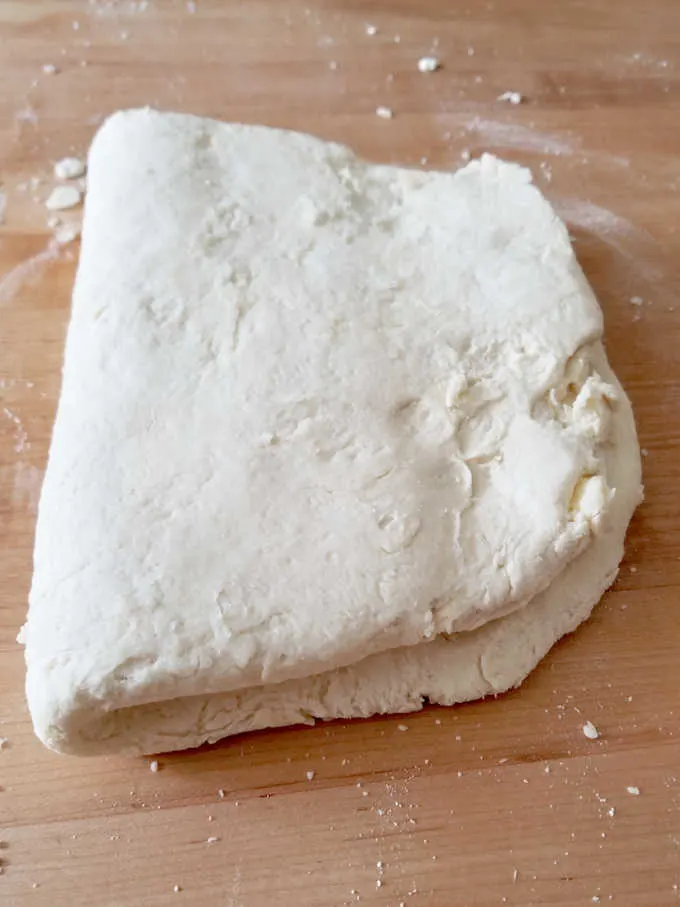
- Pat the dough to 1/2″ thick and fold in half. Pat the dough again to 1/2″ thick and fold in half.
- Pat to 3/4″ thick and cut the biscuits.
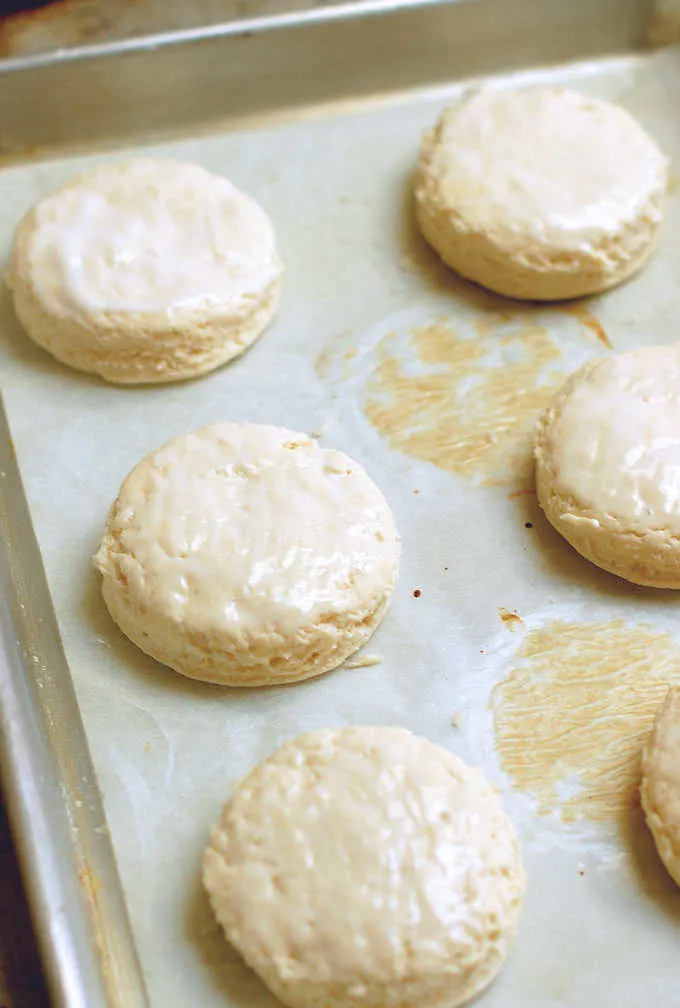
- Brush the biscuits with buttermilk.
- Bake in a hot oven until the biscuits are well-risen and golden brown.
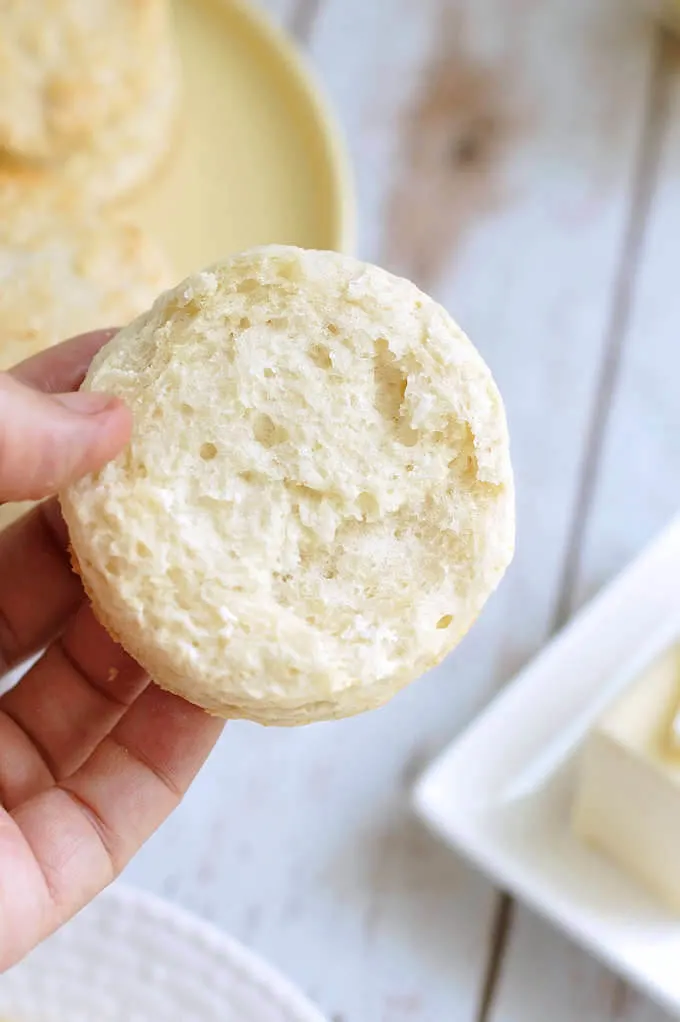
- Sourdough Biscuits have a flaky texture a nice open crumb.
Storage
Sourdough Biscuits are best enjoyed warm from the oven or within a few hours of baking. Leftover biscuits can be frozen for up to a month. Defrost and warm in a 200F oven before serving.
Looking for something else to make with your sourdough discard? Here’s a list of my Best Sourdough Discard Recipes.
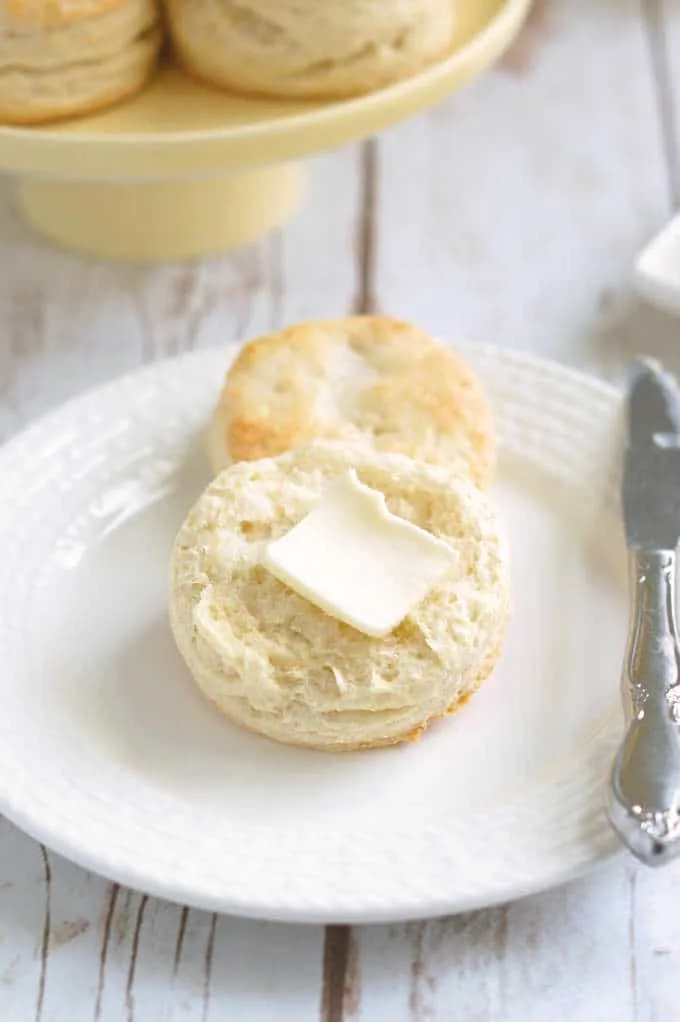
If you love this recipe as much as I do, I’d really appreciate a star rating and a quick comment. Ratings and comments help my recipes show in search results. Thanks!
Sourdough Biscuit Recipe
Ingredients
- 10 oz all purpose flour (2 cups, see note)
- 8 oz cake flour (2 cups)
- 4 teaspoons baking powder
- 1 teaspoon baking soda
- 1 tablespoon granulated sugar
- 1 teaspoon table salt
- 8 oz unsalted butter (cold and cut into 16 pieces)
- 8 oz sourdough discard (1 cup, room temperature)
- 8 oz buttermilk (1 cup, room temperature)
Instructions
- Preheat the oven to 400 °F. Line a half sheet pan with parchment paper.
- Combine 10 oz all purpose flour, 8 oz cake flour, 4 teaspoons baking powder, 1 teaspoon baking soda, 1 tablespoon granulated sugar, and 1 teaspoon table salt in a mixing bowl. Whisk the dry ingredients to combine.
- Mix 8 oz unsalted butter into the flour with your fingers until it's broken down into bits slightly larger than a pea.
- Combine 8 oz sourdough discard and 8 oz buttermilk in a small bowl. Add the buttermilk mixture to the flour all at once. Mix until about 2/3 of the dry ingredients are absorbed.
- Turn the dough onto a lightly floured surface and gently knead together just to incorporate the remaining dry flour (this should only take about 6-8 kneads).
- Gently pat dough to a 1/2" thick rectangle, brush off excess flour and fold the dough in 1/2. Pat gently to stick the dough together and and fold again. Pat to 3/4 " thick disc and cut with a 2.5"-3" biscuit cutter. Gather the scraps together, pat to 3/4" thick and continue cutting until all the dough is used up.
- Set the biscuits onto the prepared baking sheet and brush the tops with buttermilk. Bake the biscuits until well rise and golden brown, about 10-12 minutes.
- If the bottoms of the biscuits are browning too fast set another sheet pan under the biscuits after 5 minutes of baking.
Would you like to save this recipe?
As an Amazon Associate and member of other affiliate programs, I earn from qualifying purchases.









Can I make this with active starter instead of discard? If so, what adaptations do you recommend?
I have a mostly rye starter – is that ok?
Thanks! I love the timetables you include in your recipes!
You can use “active” starter. But by “discard” I mean any starter that hasn’t been fed for a day or so. Just don’t feed the starter for a day. Even if it’s been fed you might get a slight extra lift from the starter but otherwise no changes are needed. Rye starter would probably make delicious biscuits. I may have to steal that idea to make rye/caraway biscuits. I love anything rye.
Loving this recipes! Simple written to follow along. Going to try this tonight with my discarded starter. Can I use oat milk instead of buttermilk? Do you need buttermilk or can you substitute with regular milk?
You can use oat milk or regular milk. The buttermilk generally imparts a slight tang and acidity to the dough. But the discard will do the same so go ahead and make the substitution. Regular milk is a little thinner than buttermilk (not sure about oat milk since I’ve never used it). So if the dough seems too wet gently knead in a little more flour as needed. These days we’ve got to use what we’ve got on hand.
I’m slightly confused about your flour measurements and was hoping you could clarify. I thought flour was universal in weight, but perhaps I am mistaken. My package of AP flour says it is 30g per 1/4 cup, which would make 2 cups weigh 240 grams. My cake flour says it is 28g per 1/4 cup, which would make 2 cups weigh 224 grams. Using the weights listed in your recipe I would actually be using 56 grams (almost 1/2 cup) more than the 4 cups of flour listed. Should I use your recipe by the weight listed? Or should I convert it for the weight of my flour?
The weight of flour is universal if you’re weighing it. But when you convert from volume measure (cups) the weight can vary based on how you fill up the cup. This is why weighing ingredients is always the most accurate. I use the “dip and sweep” method for weighing flour. I get 5 oz per cup (ap flour) and I use a conversion of 28g per ounce. If you fill a measuring cup by spooning the flour into the cup it’s likely that cup of flour will weigh less than 5 oz. You should always follow the recipe as listed and if you can weigh your ingredients that is best. Also, cake flour does weigh a bit lighter than ap flour. I get 4.5 oz per cup of cake flour.
@K.L., The weight of flour varies with type, grind and even humidity. I usually try to figure out what the author of the recipe is using and go with that. I myself always use a scale for making my own recipes definitely find it a challenge when following others. Just to make things worse, a Canadian cup is larger than an American one. Some Canadian bakers use American tools and vise versa. I just went to my kitchen and weighed three types of flour. Here are my results…
White all purpose flour weighed at 166 grams per cup
Whole Wheat came in at 156 grams and a cup of rye weighed 144g.
Just a couple months ago I weighed some No-Name All Purpose Flour and it weighed 150 grams per cup. I always try to find recipes with weight measurements but there are some great bakers out there that only use mass so you just have to grin and bake it.
Oh yeah… I have never found a flour that only weighed 120 grams per cup. I’m sure it’s out there but I’ve yet to see it 🙂
Yes, to all of this. This is why weighing ingredients is most accurate for baking.
There is no universal weight for a cup of flour since how you fill the cup will determine how much flour is in the cup. I use the “dip and sweep” method to fill the cup. That is, I dip the cup into the bin and overfill the cup. Then I sweep away the excess flour. Using this method I consistently get 5 oz of ap flour in a cup (140g). If you spoon the flour into the cup you’re incorporating more air and will have less flour in the cup.
Your biscuits are awesome. I made a couple substitutions, I replaced the buttermilk with kefir and added a little more than was called for because the dough was very dry and wouldn’t come together. Last, I used salted butter because that was all I had. The biscuits were light, flaky and delicious
Hi, thanks for great recipes. What if i don’t have buttermilk? Do you have another option? Thanks
Add a tablespoon of lemon juice or white vinegar to a cup of whole milk. Let it sit for a few minutes to thicken.